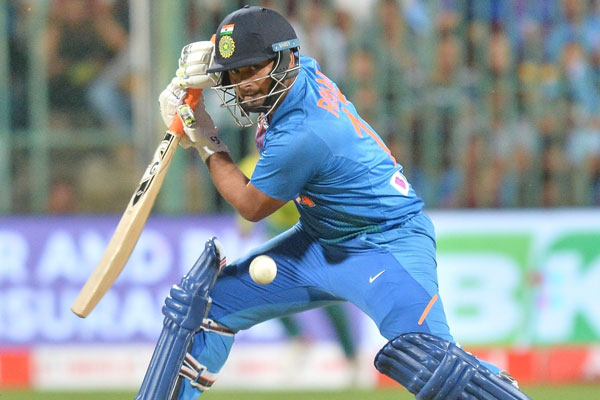After a complete whitewash in the Caribbean Islands, much was expected from Team India, especially in terms of their batting during the three-match T20I series against a relatively inexperienced South African side led by Quinton de Kock.
However, what culminated on September 22, at the Chinnaswamy has left the team management more to ponder upon than to praise its batting unit.
Before the start of the series which ended in a 1-1 draw, newly appointed batting coach Vikram Rathour had called on his players to play “fearless cricket” rather than “careless cricket”.
In the two matches that were played over last one week, Team India batters did try to come out with a same strategy of aggressive intent and were bold enough to express themselves, relying on the backing of the support staff and the skipper.
While in Mohali, Virat Kohli himself set the tone with a brilliant 72* to take India across the line, the young Indian batters found themselves wanting in Bengaluru where they failed to cash in on a rather good-start in the decider which the hosts lost by nine wickets.
In Mohali, Kohli — who is India’s batting mainstay without a doubt — once again showed the world why he is the best across formats. Chasing 150, the Indian skipper did what he does best and took the team home to a commanding seven-wicket victory.
Alongside, Kohli, Shikhar Dhawan also showed glimpses of returning to form as he scored a quick-fire 41 before he became victim of David Miller’s brilliance at long-on.
However, in Bengaluru, Team India batters were guilty of bad shot selection. On a pitch which is considered to be a batting paradise, what was required from the Indian batters, after Kohli opted to bat, was to stay at the crease and respect the good bowling display by the Proteas.
But, as Kohli admitted, the hosts failed to read the tempo of the game and in the end, fell short of the target which they would have liked to set for the visitors.
It was only at the Chinnaswamy where the middle-order got an opportunity to bat after the top three of Rohit, Dhawan and Kohli failed to come out with their usual performance.
Rishabh Pant, who has been in the news more than any Indian player in the past two weeks, looked to be in control till the 20th ball on which he lost his cool and gave away his wicket.
Shreyas Iyer, who has been in form since the series in the West Indies, also had a one-off failure as he was stumped on a wide delivery down the leg side.
Pandya brothers, Krunal and Hardik, did not appear to be in any form as they kept searching to make contact with the middle of the bat.
In the end, the team could manage only 134 runs which the visitors chased down with utmost ease to draw the series and regain some confidence.
However, the Indian skipper is not bothered with their batting performance and insists that they will look to come out of their comfort zone in their preparation for next year’s World T20 to be held in Australia.
“These kinds of games will keep happening as long as we are wanting to come out of our comfort zones as a team and putting ourselves in a situation, which could be the case in a big game in a big tournament,” Kohli explained after the match on Sunday.
“I think if we as a team are willing to get out of our comfort zones a lot more, then we will be unfazed with what happens at the toss. That’s why we have people batting till nine. Unless you do that and start taking those risks, you are always going to be put under pressure somewhere or the other. We want to make sure we iron all of those things out before we head into the World Cup.”
While there’s not much to worry for the Indian batting unit considering Sunday’s performance to be a one-off case, they should surely be putting their heads down and focus on their shot selection in the T20 format, which they, till now, have been playing in the old, traditional method.
The performance in the two T20I games cannot be a signal of a greater batting problem creeping within Kohli’s brigade, but a deep thinking on shot selection might not be harmful for the Men in Blue in a bid to improve their performance.



































